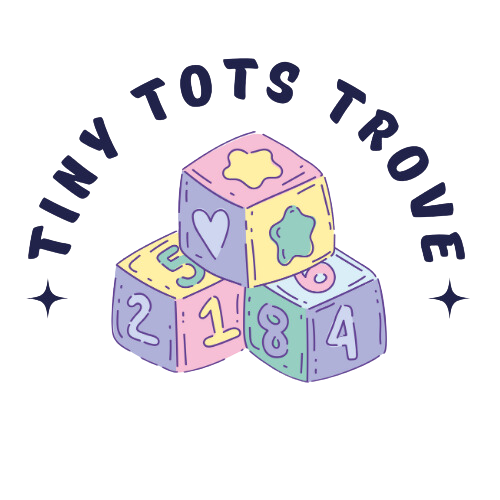_(500_x_333_px).jpg)
The Crucial Role of Physical, Sensory, and Cognitive Wellness in Preventing Communication Disorders
Co-authored by:
- Holly Yau (Principal Speech and Language Therapist), KidsFirst
- Grace Tan (Senior Occupational Therapist), KidsFirst
Early childhood is a period of tremendous growth and development, where the foundation for future health, learning, and communication skills is laid. As parents, caregivers, and educators, understanding the interplay between physical, sensory, and cognitive wellness and how that affects communication is vital.
- Physical Wellness
For young children, physical health forms the building blocks of their overall wellness. This includes proper nutrition, regular exercise, and adequate sleep.
- Nutrition: A balanced diet rich in essential nutrients supports brain development and physical growth.
- The American Academy of Pediatrics Committee on Nutrition recommends these nutrients for healthy brain development: protein, zinc, iron, choline, folate, iodine, long-chain polyunsaturated fatty acids, and vitamins A, D, B6, and B12.
- Some foods that enrich your child’s diet include dark leafy green vegetables (e.g. spinach), seaweed, and colourful fruits (e.g. blueberries, strawberries).
- Exercise: Physical activity enhances motor skills and coordination, which are key for engaging in daily activities and learning. Activities like crawling, walking, and climbing are important in helping your child develop motor skills that are closely connected to cognitive and sensory development.
- Sleep: Quality sleep is essential for brain development, memory consolidation, and emotional regulation. Children of different ages have different sleep needs, so it is important to adjust accordingly.
- Sensory Wellness
As a child develops, their brain continues to learn to perceive, process, and integrate different sensations around them. Their sensory system plays a key role in helping them stay regulated while interacting with the world and developing the skills to organise their body, thoughts, and emotions.
Our senses—such as hearing, sight, touch, taste, and smell—provide the foundational input necessary for understanding and engaging in meaningful interactions. For instance, auditory processing enables us to discern and interpret spoken language, while visual processing helps us read non-verbal cues like facial expressions and body language.
Proper sensory regulation ensures that individuals can manage sensory input and avoid becoming overwhelmed or distracted, which is essential for clear and effective communication. When the sensory system functions optimally, it supports better focus, comprehension, and responsiveness, ultimately enhancing both the quality and depth of our interactions with others.
- Cognitive Wellness
Cognitive development is the process by which children gain knowledge, problem-solving skills, and the ability to understand and use language. We can promote cognitive wellness by creating environments that stimulate intellectual curiosity and critical thinking.
- Appropriate toys and activities: Engaging children in developmentally appropriate educational activities, such as puzzles, books, and games, helps further advance their cognitive abilities. We recommend toys and activities that foster interaction between you and your child. Open-ended toys (e.g. cooking sets, building blocks) create more opportunities for interaction than close-ended toys (e.g. toy xylophone).
- Social Interaction: Interacting with children of a similar developmental stage helps them develop appropriate social and communication skills. Playdates, group activities, and family interactions provide opportunities for practising language and understanding social cues.
- Emotional Support: A supportive emotional environment helps children feel secure and confident. Stress and anxiety can negatively impact cognitive development and communication skills, so facilitating a nurturing and responsive atmosphere at home or in school is essential.
Communication Disorders
Communication disorders can arise from various factors, including delays in language development, sensory processing issues, and cognitive challenges. Early intervention and preventive measures can significantly reduce the risk of these disorders.
- Create communicative opportunities: Use daily routines (e.g. putting shoes on, snack time) to generate moments of communication and interaction. For example, when putting shoes on, you can target nouns (shoes, socks, feet), action words (put on, stand up, sit down), prepositions (put it in), and question words (Where are your shoes?).
- Supportive Environments: By creating a language-rich environment, we can encourage our children to express themselves and engage in conversation, thus supporting healthy communication development. Regular and interactive book reading provides a way for children to learn language structures and vocabulary that they may not be exposed to in day-to-day speech.
- Early Intervention and Professional Guidance: Regular developmental screenings can identify potential communication issues early. Paediatricians and speech and language therapists can assess a child's language skills and developmental milestones to address any concerns early. If you are concerned about your child’s speech and language development, speak to a speech and language therapist for help.
Conclusion
By focusing on holistic wellness, providing diverse sensory experiences, and supporting cognitive growth, we lay a strong foundation for our children’s future success in communication and beyond.
Try incorporating one of these wellness tips into your daily routine this week and see how your child responds. If you have concerns or questions, don’t hesitate to reach out to us at KidsFirst for expert guidance at https://kidsfirst.co/.
About the Authors:
- Holly is a Principal Speech and Language Therapist at KidsFirst. She has 14 years of experience working with children and their families in various settings. She finds joy in helping children reach their fullest potential.
- Grace is a Senior Occupational Therapist at KidsFirst. With extensive experience working with children with special needs and their families, she strives to empower them with the necessary skills to be successful in their communities.
Citations
- Schwarzenberg, S. (2018, January 22). “Feeding” Brain Development: Key Nutrients Essential during the first 1,000 days. American Academy of Pediatrics. https://publications.aap.org/aapnews/news/6218/Feeding-brain-development-Key-nutrients-essential
- Dickinson, D. K., Griffith, J. A., Michnick Golinkoff, R., & Hirsh-Pasek, K. (2012). How Reading Books Fosters Language Development around the World. Child Development Research, vol. 2012. Available online at: http://www.hindawi.com/journals/cdr/2012/602807/cta/.



